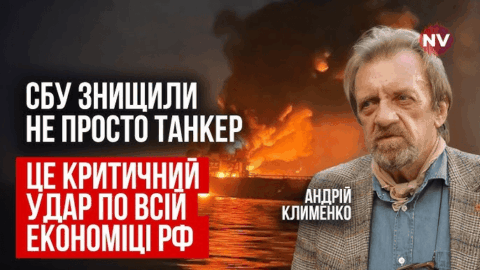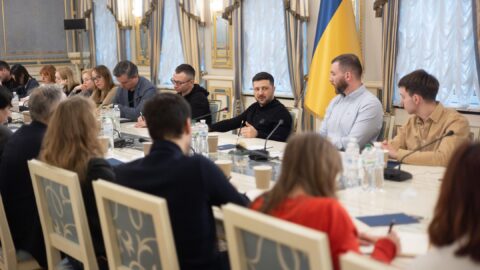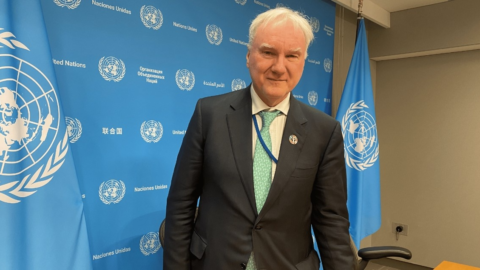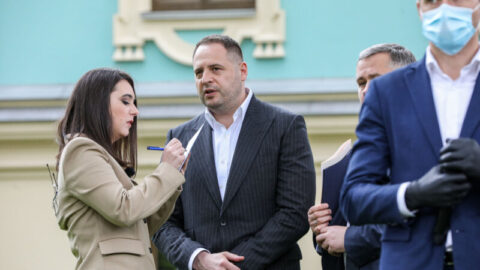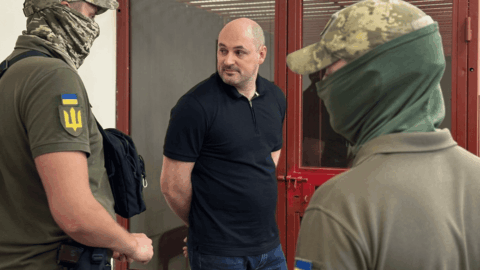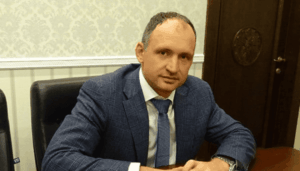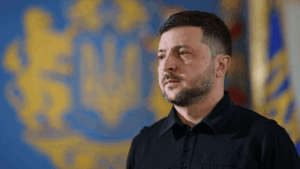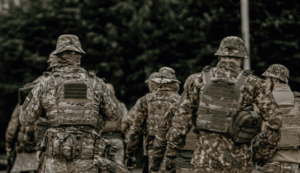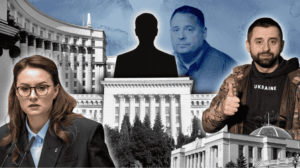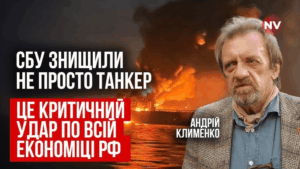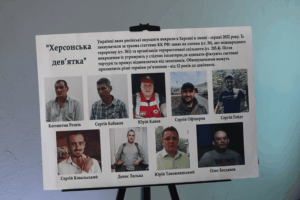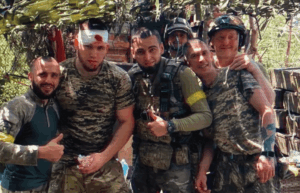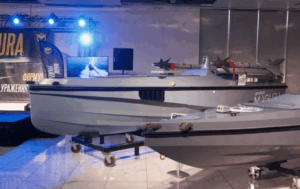Colonel Svitan warns Russian nuclear provocations are likely, criticizes Kyiv’s inaction, and urges immediate mirror strikes on Moscow with Tomahawks and ballistic systems now to halt Russia’s drone campaign effectively.
Why are Russians targeting civilian cities, and how could the United States change the course of the war with hundreds of Tomahawk missiles? In an interview with Yevheniya Kutnova for Fabryka News, Colonel Roman Svitan explains how Russia’s “firework tactic” of pressure works toward a “Minsk-3,” why Kazakhstan may be the next target — and whether Omsk will soon be set ablaze.
Fabryka News interviewed Colonel Svitan.

Roman Svitan: Nuclear Explosion! Russia Messed Up at Its Own Nuclear Power Plant. Ukraine Has Begun Strikes on Engels and Moscow
Yevheniya Kutnova: Hello friends, you are watching the Fabryka News. I’m Yevheniya Kutnova, and this is the daily analysis of events with Colonel of the Armed Forces of Ukraine, Roman Svitan. Roman Hryhorovych, I’m glad to welcome you to our broadcast.
Roman Svitan: I wish everyone good health.
Yevheniya Kutnova: Likewise. Today is October 7th, for the viewers watching our stream. Roman Hryhorovych, let’s start our conversation with the news that there are reports that the Novovoronezh nuclear power plant has been attacked, and Russia is blaming Ukrainian drones for this. There are no further details yet, but perhaps more will emerge by the end of the broadcast and we will discuss them. Nevertheless, does this seem like a provocation from the Russians, considering the situation with ZNPP and not only that?
Roman Svitan: They captured the ZNPP — where else is there to provoke or act? At one point they captured ChNPP and fled from there when they were retreating from northern Ukraine; they captured the ZNPP. In other words, you can’t invent any greater provocations or military actions than that: the complete seizure of a nuclear facility, and the largest in Europe — six nuclear reactors. So the effects of our strike systems that sometimes pass near nuclear stations are like a mosquito bite compared to what the Russians have already done to our two nuclear power plants. They’ve already been at Chornobyl and at Zaporizhzhia, and they remain at Zaporizhzhia.
We plan certain routes — for example, the flight paths of our drones mostly head for the same Engels; to get to Engels ours will pass through Voronezh. And by the way, to go on to Moscow you have to pass through the Kursk region, that is, near the Kursk NPP. The Russians have about a dozen of these nuclear stations, many of them; that’s one reason why Putin will never deliver a nuclear strike on Ukraine — because the next day all those ten or fifteen Russian nuclear stations would become like Chornobyl for them. Ten Chornobyls in the European part of the Russian Federation. They fully understand that — if such a strike were to happen, of course no Russian would take out the nuclear club.
That our drones carry out combat tasks — yes, we already have hundreds of them, they will fly, they won’t orbit around nuclear stations. In our time we used to fly; we had red zones, all NPPs were in those zones, you couldn’t approach them. Well, that’s for pilots who understand how to carry out a combat or training mission. A drone’s routes are plotted where possible. Besides, there’s no point routing them near nuclear stations — the air defense there is quite serious. So it’s most likely a provocation by the Russians. We’re not going to fly there. There’s no point, I repeat, because the density of air defenses in the area of nuclear sites — nuclear objects — is maximal.
So another attempt by the Russians to show that we hit them — it means you should expect strikes on our nuclear stations. That possibility exists. This is what we call a casus belli, a “crucified boy” — remember October 7, 2023, the same picture: the Israelis allowed utterly deranged Hamas fighters into their territory to set them up. It’s the same picture now. Therefore we do not rule out the possibility that in the near future the Russians will try to strike some targets that are not exactly nuclear facilities, but, say, the distribution networks that run from our nuclear stations. We must be very vigilant.
Yevheniya Kutnova: Yes, that’s exactly why I started with this topic — because we already see that the Russians attack our critical infrastructure daily, and now we’re seeing this provocation at a nuclear power plant. And their actions again can be used as a pretext.
Roman Svitan: Casus belli, that’s right. In other words, it’s a setup. I call it the “crucified Donetsk boy.” They carried that around — crucified the boy and paraded him for 12 years now. It’s roughly the same picture here. You can invent names like “Ryazan sugar” or call it something else, but really this is a casus belli.
Yevheniya Kutnova: Roman Hryhorovych, overall the Russians attacked Ukraine with 150 drones and two Iskanders; there were hits in 10 locations. In particular, what they are doing — they hit a grain storage facility in Chernihiv region. In addition, in Kherson on the morning of October 7 they dropped explosives from a drone onto a public transport stop. It’s also reported that explosions occurred in Kharkiv, and there was damage to energy infrastructure — Poltava locomotive depot power supply. Is there a chance that life in the frontline regions could be made impossible for residents in your view, and can we do anything to effectively counter all this?
Roman Svitan: Right now, at this stage, when the Russians have a large number of strike systems — really a lot — they are producing, together with the Chinese, not just dozens but hundreds of aerial vehicles per day, and they use around a hundred or more every day and once a week 500–700 aerial vehicles. In other words, they have already ramped up production with the Chinese and can continue to increase it, which means we are left with the only mechanism to stop these strikes: to strike back in the same way — first, to ramp up our own production and deliver mirror strikes. We’ve talked about this before; the optimal option is striking Moscow. Until we start hitting Moscow, Ukraine will keep burning the way it is today. And for some reason nobody is striking Moscow yet — that’s a big question for those green men who occupied the Office and Bankova. That’s their responsibility. They aren’t striking; they are doing everything possible so that we don’t have strike systems that could reach Moscow. And until we start burning Moscow the way they burn Ukraine, there should be that direct dependence. Because roughly how many Ukrainians remain in Ukraine now, about the same number of Russians and similar or like-minded people live in Moscow. That should be the logic: any strike on Ukraine should be mirrored on Moscow. But there’s nothing to strike Moscow with, and those green men still haven’t produced a single strike system capable of reaching Moscow or piercing the Russian air-defense system.
We’ve been saying for years that Moscow was treated like a sacred cow — when it wasn’t yet surrounded by six or seven rings of air-defense systems it could have been burned to the ground. No one did that. After they completed the task of increasing the density of air defenses around Moscow, drones and some cruise missiles appeared, but they don’t break through that air defense. And still there are no ballistic missiles. No matter what anyone says, for seven years these green men have been sitting in Bankova in the Office — there isn’t a single ballistic missile that could reach Moscow. Either the government needs to be changed, at least the executive branch — not just shuffled around inside ministerial offices, but replaced outright. Kick them out, because they still haven’t produced a single ballistic missile capable of reaching Moscow. Until we do that, the Russians will keep burning Ukraine. There is no other option. Of course we need to strengthen our frontline air defenses, no question. But we can’t do without mirror responses. The number of strike systems that the Chinese and Russians are producing together and sending at us with Russian hands already exceeds the capabilities of any air-defense system. Hundreds of aerial vehicles come in and it is simply impossible to intercept them; the only option is a mirror response — and not against Belgorod, Kursk, or Rostov, but specifically against Moscow. Well, Moscow is still a sacred cow — and you should thank the green men for that.
Yevheniya Kutnova: Roman Hryhorovych, you said that hundreds of Tomahawks could change the picture — in what way?
Roman Svitan: The thing is: in a war with a resource-rich country, the only way to change the situation at the front is to deprive the Russian economy of its resource. That’s why, in principle, the Russians have a relatively small population, around a hundred million — there are lots of countries like that, and some are much bigger, 1.5 billion or two countries. I mean, America has 300 million, Europe 500 million; the Russians number in the hundreds of millions, and most of them live in the European part up to the Urals. They live there; again, the territory is supposedly 17 million square kilometers but it’s empty, it’s useless to anyone. It’s like why Joe is unattainable — because nobody needs him. It’s the same picture here: that territory is of no use to anyone. That’s why they all cluster in the European part, mainly up to the Urals. So, in short, it’s a pointless country, completely pointless, but it has certain resources — mainly oil, metals, and nuclear. I mean certain thermal power units that they sell. The same Rosatom.
That is, to dismantle it through its oil dollars — through raw-material sales. In other words, a resource-exporting country gets a certain amount of foreign currency from selling raw materials, a few hundred billion dollars they can spend on the war. So how do we defeat them? Deprive them of those resources, cut off their ability to get those oil dollars. How can this be done with Tomahawks? Again, there is only a small window of opportunity before they close the frontal air‑defense ring — a few months, at most until the New Year; their production and pace are quite serious right now.
Take out the Russian economy: all the refineries, all the mechanisms for getting those oil dollars — the pipelines, gas and oil pipelines, oil transshipment terminals. You can reach up to 1,500 kilometres, possibly from Ust‑Luga and Primorsk to Novorossiysk. The main strikes should be on the Russian economy, which is largely located west of the Urals. Practically speaking, Tomahawks would reach up to the Urals. That means economic targets plus military ones as well — drone production, places like Alabuga and Izhevsk. At this stage a 1,500 km reach is feasible; even the minimum Tomahawk range would get there.
There will be heavy Tomahawk attrition, because at this stage they will shoot down the majority — more than half. In a few months they may be shooting down almost everything. So there isn’t much time — not for Tomahawks, not for Flamingos, not for Palyanytsia and all the other winged aerial systems. Russian air defence will cope with airborne targets. That’s what we need to do. At the same time, we must increase the density of our frontal air defences so Russian air assets can’t get through to us.
And then the next stage for us is ballistics. The Americans have ballistic missiles and could share some with us — not strategic or mid‑to‑long range, but at least short‑range ballistic systems: ATACMS, the PrSM (500 km would reach Moscow). So the capabilities exist — the question is Trump’s “pregnancy,” a matter for a gynecologist — find some competent psychologist‑gynecologist and clarify which way and how long until, finally, normal decrees are issued.
Tags: drone war military expert interview Moscow strikes Roman Svitan Russian defense Tomahawk missiles Ukraine war 2025 war strategy


